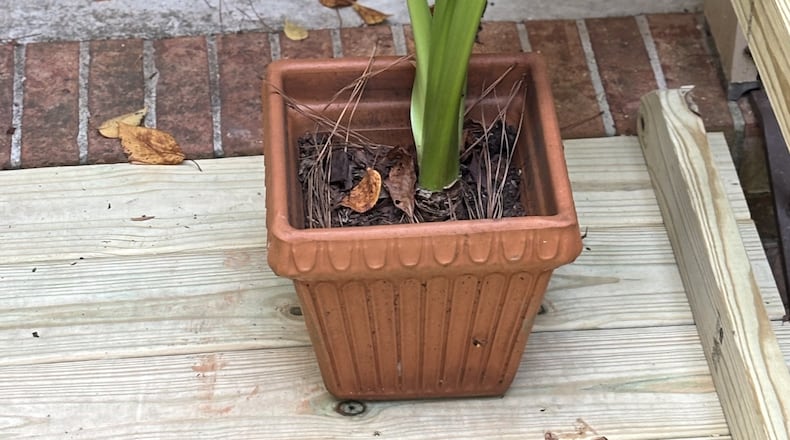Q: I have two amaryllis bulbs that I planted in pots at the beginning of the summer. I intended to plant them in the yard but never got around to it. Now the leaves on them are about three feet long. What should I do now? — Pam McKee, North Decatur
A: You’ve given the amaryllis a nice summer. In order to bloom, they need an equally nice winter: one that is dry and does not freeze the bulb. The best way to ensure this is to cut the foliage back to one inch above the bulb neck now in October, keep them in the pots, and bring them indoors to a dry and cool place. Do not water. Check on them a couple of times in winter. If the soil seems extremely dry, give them a quarter cup of water. By spring they will be convinced that they have had a good winter. You can bring them outdoors when nighttime temperatures are above 50 degrees. Leaves will shoot up and you will get the blooms that you wanted in May.
Q: Will 10-6-4 organic fertilizer or Osmocote hurt my English ivy ground cover? — Costa Tsolias, email
A: Your organic fertilizer with an analysis of 10-6-4 is derived from natural sources like feather meal, fish meal, compost, and greensand. These components release nutrients very slowly, which means there is little chance of hurting the ivy by burning the leaves or roots. Osmolcote contains nonorganic synthetic fertilizer ingredients that are coated with materials that release their nutrients slowly as well. There’s no problem with applying either product to English ivy.
Q: My favorite Japanese maple tree is 30 years old. Two years ago, I noticed that many of my trees were covered with a gray fungus. Limbs and branches got brittle and branches fell. How can I save the one maple tree remaining? — Dahlia Lee, email
A: The simple answer is to give it more light. The gray scaly stuff on your branches is a colony of lichens. They don’t harm your trees; they just use the bark to hold on. Lichens grow when a tree becomes less leafy due to outside forces. I imagine that over the years, your landscape has become more shady. Your Japanese maples lost leaves as a result. Now the lichens have a perfect environment on the branches. If you want to save your maple, one option is to prune branches overhead to admit more light. If it’s truly your favorite Japanese maple, you might consider moving it to a more sunny spot.
About the Author





